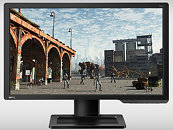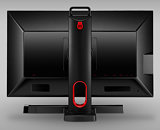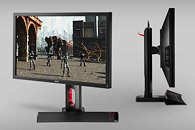- Joined
- Dec 6, 2011
- Messages
- 4,784 (1.01/day)
- Location
- Still on the East Side
BenQ's Gaming Monitor lineup will soon be expanded to include two new models, the 24-inch XL2411Z and XL2420Z. Both displays pack loads of goodies like BenQ's Motion Blur Reduction technology, Flicker-free technology, refresh rates of up to 144 Hz, a 1 ms response time, the Black eQualizer color engine, and adjustable low blue light levels.
BenQ's monitors also have a W-LED backlight, NVIDIA 3D Vision 2 support, a native resolution of 1920 x 1080 pixels, a 1,000:1 contrast ratio, and VGA, DVI and HDMI connectors. The XL2420Z adds to the mix a second HDMI port, a 2-port USB 2.0 hub, and the S Switch remote controller for fast preset changing and OSD navigation. The XL2411Z and XL2420Z have yet to be priced, or dated.



View at TechPowerUp Main Site
BenQ's monitors also have a W-LED backlight, NVIDIA 3D Vision 2 support, a native resolution of 1920 x 1080 pixels, a 1,000:1 contrast ratio, and VGA, DVI and HDMI connectors. The XL2420Z adds to the mix a second HDMI port, a 2-port USB 2.0 hub, and the S Switch remote controller for fast preset changing and OSD navigation. The XL2411Z and XL2420Z have yet to be priced, or dated.



View at TechPowerUp Main Site







 I can not afford one though.
I can not afford one though.
 , you just said that 1ms or 5ms, it takes time for a pixel to change color, & i am saying... with vsync on to simplify it, the time it takes to change a pixel across all the panel types these days is faster than the interval between each frame coming in from a 120fps source, so i see no limitation with the panel type to maintain vsync 120hz accurately, yet the companies are taking quite a while
, you just said that 1ms or 5ms, it takes time for a pixel to change color, & i am saying... with vsync on to simplify it, the time it takes to change a pixel across all the panel types these days is faster than the interval between each frame coming in from a 120fps source, so i see no limitation with the panel type to maintain vsync 120hz accurately, yet the companies are taking quite a while (not just for experiments)
(not just for experiments)